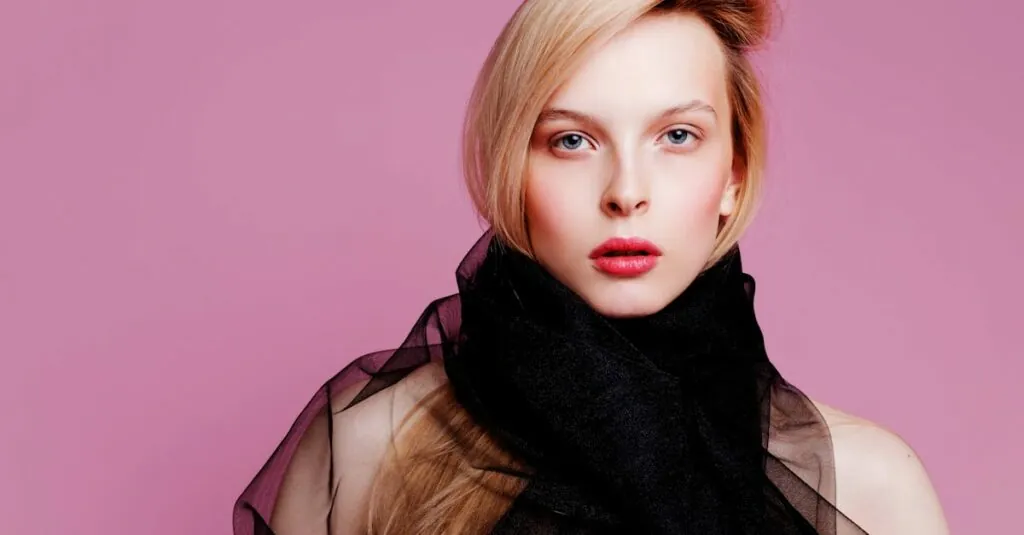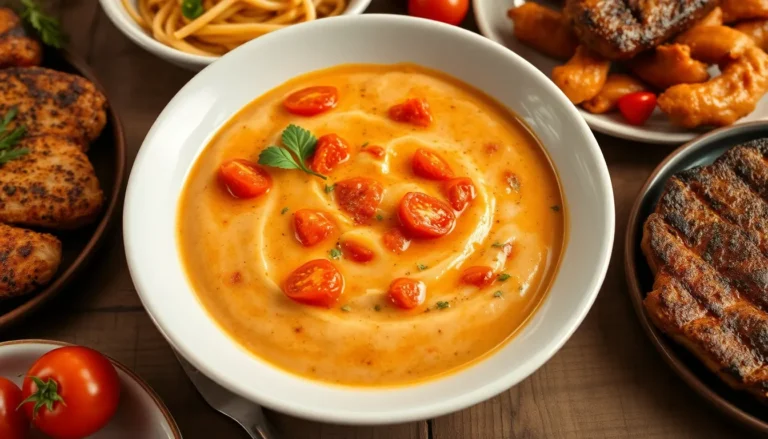Scarves aren’t just for keeping warm; they’re the ultimate fashion chameleons. With a simple twist or knot, a scarf can transform even the most basic outfit into a runway-worthy ensemble. Whether it’s a chilly day or a sunny afternoon, the right scarf can add flair and personality to any look.
Imagine walking into a room and instantly turning heads with a stylish scarf draped just right. From chic knots to effortless wraps, the possibilities are endless. It’s time to unleash that inner stylist and explore the world of scarf styling methods. Get ready to elevate your wardrobe and maybe even impress a few friends—after all, who doesn’t want to be the go-to guru for all things fabulous and fashionable?
Table of Contents
ToggleOverview of Scarf Styling Methods
Scarves serve as versatile fashion accessories, enhancing outfits significantly. Various styling methods exist for scarves, allowing individuals to express personal style and creativity. Common techniques include knotting, wrapping, draping, and layering, each producing unique effects.
Knotting provides a structured look. Tying a scarf at the neck creates a polished appearance suitable for professional settings. Wrapping, on the other hand, offers warmth and elegance. This method works well with oversized scarves, providing a cozy effect during colder months.
Draping adds fluidity and softness. She drapes a lightweight scarf across her shoulders for a breezy vibe that suits casual outings. Layering introduces dimension and texture. Combining scarves with different patterns and materials can elevate an ensemble, resulting in a fresh and dynamic look.
Specific knots like the French knot or infinity knot deliver distinctive styles. The French knot features a simple double twist, achieving a chic finish. The infinity knot provides a continuous loop, blending comfort with flair.
Choosing a method often depends on the scarf’s material and shape. Silk scarves lend themselves well to elegant knots, while chunky knitted versions pair nicely with wraps. Utilizing these techniques allows fashion enthusiasts to adapt their styles effortlessly, making every outfit pop.
Experimentation drives innovation in scarf styling. Trying various combinations encourages discovering new looks that resonate personally. With numerous methods at hand, anyone can transform their wardrobe and become a source of style inspiration.
Popular Scarf Materials
Scarf materials significantly impact comfort and style. Understanding the differences enhances the sartorial experience.
Natural Fibers
Cotton offers breathability and softness, making it ideal for warmer months. Silk provides a luxurious feel with a natural sheen, often used for formal occasions. Wool adds warmth and texture, perfect for colder climates. Linen stands out for its lightweight nature and ability to wick moisture, which keeps the wearer cool. These natural fibers contribute to a scarf’s overall drape and adaptability, offering versatile styling options.
Synthetic Fabrics
Polyester enhances durability and wrinkle resistance, ensuring longevity in fashion pieces. Acrylic mimics wool’s texture while remaining lightweight, appealing for casual wear. Nylon boasts strength and elasticity, often found in scarves designed for active lifestyles. Rayon combines the softness of natural fibers with the benefits of synthetics, creating versatile layering pieces. Each synthetic fabric provides unique qualities that influence how a scarf can be styled and worn.
Classic Scarf Styles
Classic scarf styles serve as foundational techniques that enhance any outfit. These methods bring out versatility, allowing individuals to express their personal fashion sense.
The Knot
The knot offers a polished look perfect for professional settings. This technique involves twisting and securing the scarf around the neck for a structured appearance. Popular knots include the French knot and the infinity knot. Each style provides a unique flair while maintaining sophistication. Silk and wool scarves are ideal materials for knotting, as they hold their shape well and add elegance. Experimenting with knot placements can also create varied effects, highlighting the scarf’s essential role in elevating an ensemble.
The Loop
The loop technique exudes a casual yet chic vibe, making it suitable for everyday outfits. This style involves folding the scarf in half, draping it around the neck, and pulling the ends through the loop. Versatile materials such as cashmere and cotton work beautifully with this method. A loop creates warmth and adds dimension without overwhelming the look. Layering different patterned scarves using this technique enhances visual interest, allowing for creative style combinations. It’s a simple way to add personality to any outfit while maintaining comfort.
Trendy Scarf Techniques
Experimenting with scarf styles adds flair to any outfit. Two popular techniques stand out as fashion staples.
The Headscarf
The headscarf technique provides a chic option for both casual and formal looks. She can tie it around her head, letting the ends drape elegantly down. This method keeps hair in place and adds a colorful element to her appearance. A silk scarf exudes sophistication, while a cotton version offers a more relaxed vibe. Wearing the headscarf with oversized sunglasses elevates the overall style, perfect for sunny days and outdoor events. This versatile accessory showcases creativity and can transform simple outfits into fashionable statements.
The Belted Scarf
The belted scarf technique acts as a striking accessory that can redefine silhouettes. He can drape a long scarf over his shoulders, cinching it at the waist with a belt. This method introduces structure, turning a simple look into something more tailored. Opt for a patterned scarf to add visual interest or a solid color for a seamless appearance. Pair the belted scarf with high-waisted trousers or a fitted dress for a polished finish. This approach not only enhances the outfit but also emphasizes the waist, creating a flattering shape.
Scarf Styling Tips and Tricks
Selecting the right scarf requires attention to material, color, and pattern. Lightweight fabrics like cotton or linen suit warm weather, while heavier options like wool or cashmere work for colder months. Coordinating colors with an outfit can enhance overall appearance. Pairing bold patterns with neutral clothing creates visual interest. Choosing a scarf with complementary colors can bring an outfit together seamlessly.
Seasonal factors significantly affect scarf choice. Summer scarves often prioritize breathability, so natural fibers feature prominently. In contrast, winter accessories focus on warmth, making wool and cashmere preferred choices. Spring and fall encourage versatile transitions, with heavier cottons or light wool providing comfort in fluctuating temperatures. Light and colorful options suit spring, while deeper hues are ideal for autumn. Adjusting scarf styles with the seasons elevates both comfort and fashion.
Scarves are more than just accessories; they’re essential tools for personal expression and style enhancement. By experimenting with different styling methods and materials, individuals can transform their outfits from ordinary to extraordinary. Each technique offers unique opportunities to showcase creativity while adapting to seasonal changes and personal preferences.
Whether opting for a chic knot or a casual drape, the right scarf can elevate any look. Embracing the versatility of scarves not only enriches one’s wardrobe but also inspires others to explore their own fashion journeys. With endless possibilities, scarves remain a timeless staple in the world of fashion.




